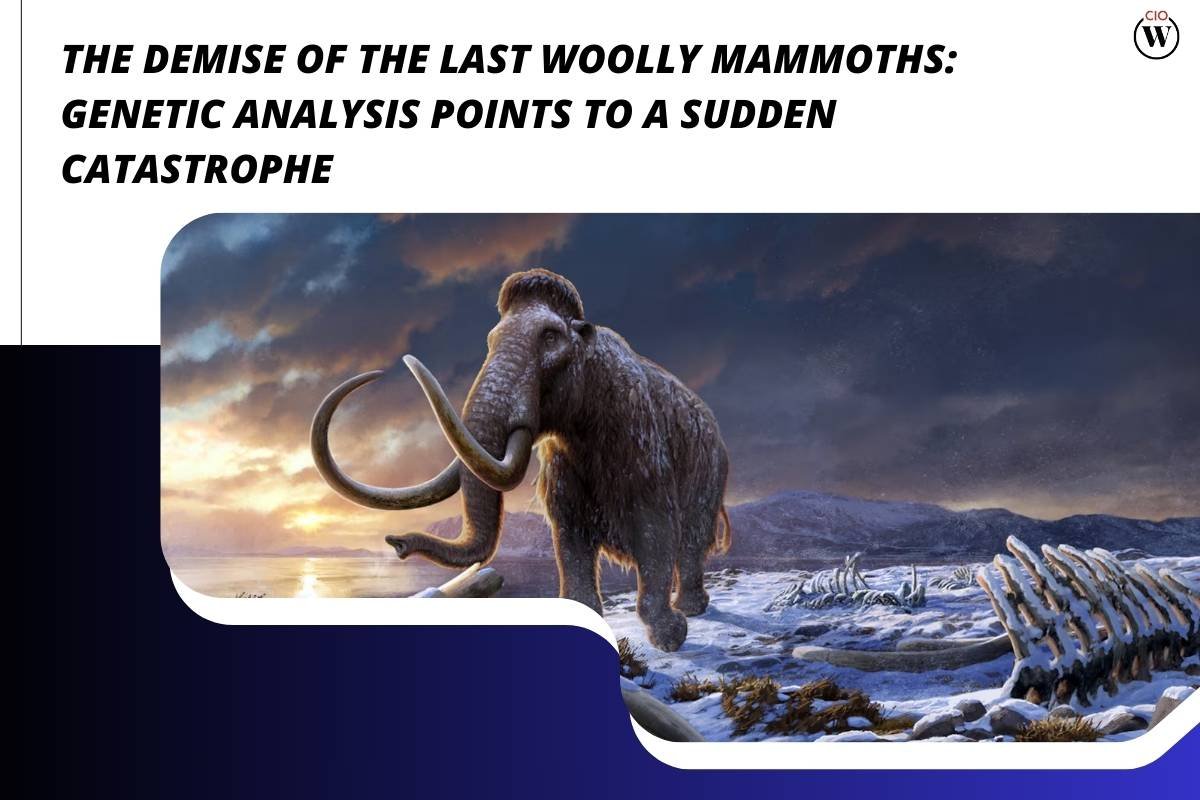Source – EL PAÍS English
The last woolly mammoths to roam the Earth made their final stand on the remote Arctic island of Wrangel approximately 4,000 years ago, marking the end of a resilient species that had survived millennia of climate shifts and human hunting pressures. The precise cause of their extinction has long been debated among scientists, with theories ranging from genetic decline due to inbreeding to sudden environmental catastrophes. Now, a new genetic analysis conducted by Prof Love Dalén and his team from the Centre for Palaeogenetics suggests that a singular, random event—a severe storm or a devastating plague—likely dealt the final blow to these majestic creatures.
According to the findings published in Cell, the Wrangel Island mammoth population, isolated for thousands of years, displayed low genetic diversity and signs of inbreeding. Contrary to earlier theories of genetic meltdown leading to their demise, the research confirms that the mammoth population on Wrangel remained stable with a few hundred individuals before abruptly disappearing. Prof Dalén emphasizes, “We can now confidently reject the idea that the population was simply too small and genetically doomed. It was probably just some random event that killed them off.”
Evolutionary Journey and Genetic Insights
Woolly mammoths, originally widespread across ice age territories in Europe, Asia, and North America, retreated northward as climates warmed and human hunting intensified around 12,000 years ago. While mainland populations succumbed to these pressures about 10,000 years ago, a small group found refuge on Wrangel Island, thanks to rising sea levels that isolated them. This isolated population persisted for another 6,000 years, offering scientists a unique opportunity to study their genetic history.
Dalén and his colleagues examined genomes from 13 mammoths on Wrangel Island and earlier specimens from the mainland, spanning a timeline of 50,000 years. The genetic analysis revealed that the Wrangel mammoths experienced a severe bottleneck, dwindling to just eight breeding individuals at one point. Despite this, the population rebounded to 200-300 individuals within 20 generations and maintained stability until their sudden extinction.
Comparisons with their mainland ancestors showed clear indicators of inbreeding and low genetic diversity in the Wrangel Island mammoths, particularly in genes crucial for immune responses. This genetic vulnerability likely made them susceptible to new pathogens, potentially contributing to their downfall. Marianne Dehasque of Uppsala University, lead author of the study, highlights the relevance of mammoths in understanding modern biodiversity challenges, noting, “Mammoths provide insights into how species cope with genetic bottlenecks, paralleling issues faced by present-day populations.”
Insights and Implications
Dr. Vincent Lynch, a biologist not involved in the research, underscores the complexity of extinction events, noting that they typically result from a combination of factors rather than a single cause. Lynch suggests that while genetic factors like inbreeding and mutations play a role, the mammoths’ extinction was likely hastened by an unfortunate environmental event that their compromised genetic state couldn’t withstand.
The study raises broader questions about the resilience of species in the face of environmental change and human impacts. As scientists consider possibilities like de-extinction technologies, the lessons from the woolly mammoths’ final days serve as a poignant reminder of the delicate balance between genetic diversity, environmental stability, and the unforeseen challenges that can lead to extinction.
While the exact circumstances of the woolly mammoths’ extinction may never be fully unraveled, the genetic insights gleaned from their story offer valuable perspectives on conservation strategies and the future of biodiversity in an ever-changing world.








